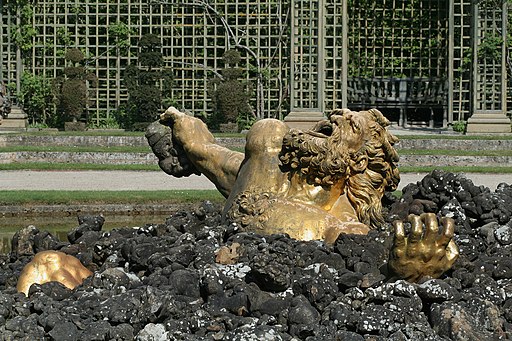 |
| Mary Charlotte ('Minnie') Senior, 1856-7 by George Frederick Watts |
"I can't tell you how enthusiastic we all were, young and old, at the end of the 'forties and beginning of the 'fifties, over Typee, Omoo, and Moby-Dick. There was quite a furore over Melville in those days. All the young people worshipped him." --John St. Loe Strachey in The Spectator, 6 May 1922This by the way is the peach of a review in which John St Loe Strachey marks the apparent "spiritual influence" of Balzac and calls Melville "an uncanny throw-forward." Strachey's unnamed "lady of letters" must have been his mother-in-law. A month before the May 6, 1922 Spectator review by Strachey, his wife Amy Simpson Strachey (1866-1957) had scooped him in her own mini-review of Raymond Weaver's Melville biography. Amy Strachey's earlier comments on Weaver and Melville appeared in the Literary Review, published by the New York Evening Post on April 8, 1922. Besides identifying her mother as an early Melville fan, Amy Strachey quoted her recollection of the Melville "furore," the telling word that connects her source to her husband's as one and the same person. As John St Loe Strachey did in his later Spectator review, Amy Strachey in her 1922 "London Letter" corrects Weaver on Melville's reception in England:
"A series of books which creates a furore in the fifties and is revived in the nineties cannot be called unknown or unnoticed." --Amy StracheyIn addition to the biography of her husband John St Loe Strachey, Henrietta Mary Amy (Simpson) Strachey wrote a novel called The Frozen Heart (1935) and a 1940 account of evacuation in wartime, Borrowed Children. As Horst Shroeder shows, her 1888 article on "The Child-Players of the Elizabethan Age" was later plagiarized by her editor Oscar Wilde in The Portrait of Mr. W. H.
From "A London Letter" by Mrs. St. Loe Strachey in the Literary Review of the New York Evening Post, April 8, 1922
New York NY Evening Post 1922 Grayscale - 1831.pdf
We have also been reading “Herman Melville, Mariner and Mystic” by Mr. Raymond M. Weaver, published in New York, and reissued here by the Oxford University Press. I should like to say one word as regards a misapprehension which the author of this book seems to suffer from as to the literary position of Herman Melville over here. The last revival of his work was, as we are accurately told, some thirty years ago, and was incited by Robert Louis Stevenson’s stories of the South Seas. I remember that my husband wrote enthusiastic reviews of the then reprints of the novels, and my mother, who had known the literary London of the fifties, told us of the furore which the books had excited on their first appearance. Nothing was talked of but “Omoo” and “Typee” at the London dinner parties of that date, and she was therefore specially interested in the reappearance of her old favorites. A series of books which creates a furore in the fifties and is revived in the nineties cannot be called unknown or unnoticed. I see that Mr. Weaver takes as illustrations some of the drawings done by William Hodges, who accompanied Capt. Cook in his voyages to the Pacific. The original water-color sketches for these pictures were bought by my grandfather, Nassau Senior, and are now hanging in my hall. The finished pictures are at Admirality House, now occupied, as every one knows, by Lord Lee of Farnham, the First Lord of the Admirality. It is a curious coincidence that these pictures should be hanging in the official home of the Minister who recently in Washington played so great a part in the discussions as to the difficult problems of the Pacific.
 |
| Engraving of The Fleet of Otaheite Assembled at Oparee by William Woollett after William Hodges, via Wikimedia Commons |
His wife Amy Strachey (1866-1957) was the daughter of Charles Turner Simpson (1819-1902) and Simpson's second wife, Mary Charlotte Mair Senior (1825-1909),
"only daughter of Nassau William Senior, master in chancery and professor of Political Economy at Oxford." --The Eagle Volume 23, obituary of Charles Turner SimpsonSo the Melville "furore" witnessed by Amy Strachey's mother belongs to the period before her marriage in 1865 to Simpson.
"Nassau John Senior's sister, Mary Charlotte Senior (b. 1825), married Charles Simpson, a barrister, in 1865 and their daughter, Henrietta Mary Amy ('Amy') Simpson, married John St. Loe Strachey (b 9 Feb 1860), son of Sir Edward Strachey of Sutton Court, Stowey, Somerset. Their daughter, Mary Amabel Nassau Strachey (b 10 May 1894), married Sir Clough Williams-Ellis (1883-1978), founder of Portmeirion."
-- A Richer Dust - The Descent of Hughes via peerage.org
Minnie's mother sister-in-law Mrs. Nassau John Senior is the subject of a biography by Sybil Oldfield, Jeanie, an 'army of One.' Her father Nassau William Senior in 1821-1857 contributed essays on Scott, Bulwer Lytton, Harriet Beecher Stowe and other fiction writers to various British journals including the Quarterly Review, Edinburgh Review, London Review and North British Review. Many of these (excluding one on the recently deceased Thackeray) are collected in Essays on Fiction (1864) which features a prefatory note by daughter Mary Charlotte Mair ("Minnie") Senior.
Truly "a lady of letters," as her son-in-law called her, M. C. M. Simpson herself wrote three novels: A Long Summer's Day (1873); Winnie's History (1877); and Geraldine and her Suitors (1880).
In addition to these works of fiction she
Her own memoir appeared the next year, Many Memories of Many People, centered in the intricate political and social life of her father, a friend of Alexis de Tocqueville and adviser to Jenny Lind. I don't see Melville mentioned in either volume.
Mary Charlotte Mair ("Minnie") Senior was 21 when Typee was first published in London.
Obviously, more study will be needed to illuminate one or more literary circles or salons associated with "Minnie" Senior where Melville was "worshipped." Considering her interesting French connections and continental travel with her father Nassau W. Senior, I'm thinking the previously unknown devotion to Melville on the part of Minnie Senior could involve Melville's reception in Paris, too.
Truly "a lady of letters," as her son-in-law called her, M. C. M. Simpson herself wrote three novels: A Long Summer's Day (1873); Winnie's History (1877); and Geraldine and her Suitors (1880).
In addition to these works of fiction she
"was a translator and editor who edited works by Guizot and Tocqueville." --Online Library of LibertyIn 1887 Mary Charlotte Mair Simpson compiled Letters and Recollections of Julius and Mary Mohl.
Her own memoir appeared the next year, Many Memories of Many People, centered in the intricate political and social life of her father, a friend of Alexis de Tocqueville and adviser to Jenny Lind. I don't see Melville mentioned in either volume.
Mary Charlotte Mair ("Minnie") Senior was 21 when Typee was first published in London.
Obviously, more study will be needed to illuminate one or more literary circles or salons associated with "Minnie" Senior where Melville was "worshipped." Considering her interesting French connections and continental travel with her father Nassau W. Senior, I'm thinking the previously unknown devotion to Melville on the part of Minnie Senior could involve Melville's reception in Paris, too.











